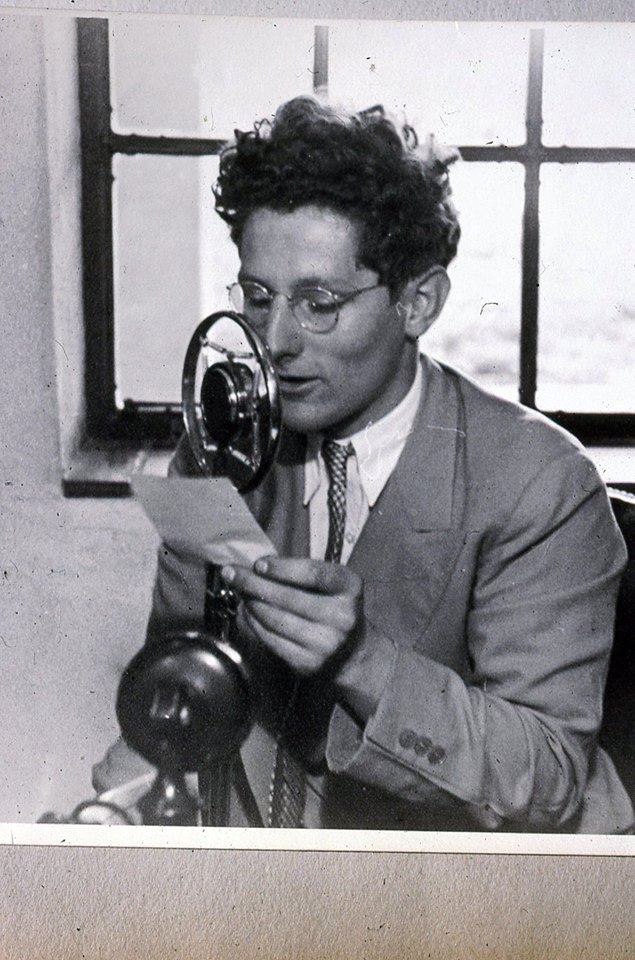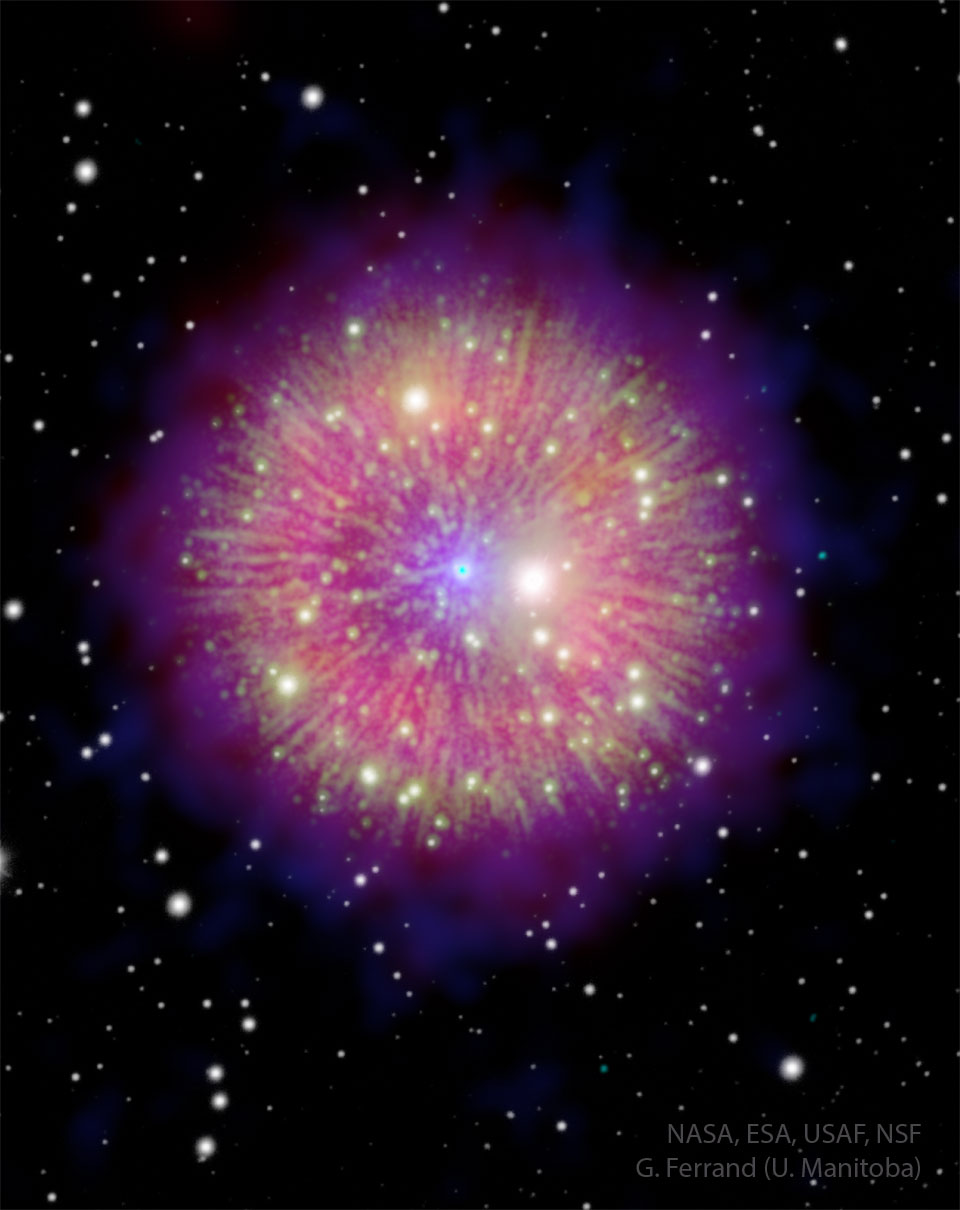Blog
Performing Saturday April 6th 2024 11am for Wingspan Life Resources (https://wingspanlife.org/). Located at Roseville Lutheran Church. Music of Uganda, Tanzania and Kenya with Yusuf Shalita, MP Gubare Mpanbara, Edna Stevens and mick laBriola.

Friday April 5th 2024 6pm. Erev Shabbat Service Featuring Jonathan Ornstein, CEO of JCC Krakow Music with Inbal Sharett-Singer, Jayson Rodovsky, Jeff Bailey, Pete Whitman and mick laBriola.
more...Changes in the alluring solar corona are detailed in this creative composite image mapping the dynamic outer atmosphere of the Sun during two separate total solar eclipses. Unwrapped from the complete circle of the eclipsed Sun’s edge to a rectangle and mirrored, the entire solar corona is shown during the 2017 eclipse (bottom) seen from Jackson Hole, Wyoming, and the 2023 eclipse from Exmouth, Western Australia. While the 2017 eclipse was near a minimum in the Sun’s 11 year activity cycle, the 2023 eclipse was closer to solar maximum. The 2023 solar corona hints at the dramatically different character of the active Sun, with many streamers and pinkish prominences arising along the solar limb. Of course, the solar corona is only easily visible to the eye while standing in the shadow of the Moon.

The above image depicts the solar corona’s change from
near solar minimum in 2017 (lower half) to near maximum in 2023 (upper half)
The image data has been remapped from its orginal circular format
to a “panoramic” retangular format, then mirrored to form a single image.
The upcoming April 8th 2024 Total Solar Eclipse path will cross Mexico and the USA
and should display and even more active corona as ther Sun nears solar maximim.
Stanley William Turrentine (April 5, 1934 – September 12, 2000 Pittsburg. PA) was an American jazz tenor saxophonist and record producer. He began his career playing R&B for Earl Bostic and later soul jazzrecording for the Blue Note label from 1960, touching on jazz fusion during a stint on CTI in the 1970s.He was described by critic Steve Huey as “renowned for his distinctively thick, rippling tone [and] earthy grounding in the blues.” In the 1960s Turrentine was married to organist Shirley Scott, with whom he frequently recorded, and he was the younger brother of trumpeter Tommy Turrentine, with whom he also recorded.
more...The Passing of Bassist Nabil Totah… Nabil Marshall Totah, 5 April 1930-August 15th 2012, Ramallah, Jordan. As a child, ‘Nobby’ Totah played violin and piano. Relocating to the USA in 1944, he studied political science before deciding on a career in music.
Taking up the bass in 1953, just as he engaged in military service, he played in army bands and then with Hampton Hawes and Toshiko Akiyoshi. These engagements occurred while he was in Japan and on his return to the USA the following year, he played briefly with Charlie ‘Bird’ Parker and then began long intermittent spells in small groups led by with Gene Krupa and by Johnny Smith.
Also during the 50s, Totah played with a wide range of artists including Eddie Costa, Tal Farlow, Bobby Jaspar, Herbie Mann, Zoot Sims, George Wallington and Phil Woods. During the next decade, he worked in bands led by Benny Goodman, Bobby Hackett, Max Kaminsky, Lee Konitz and Hazel Scott. Concurrent with these activities, Totah also led his own small groups using as sidemen a distinguished array of musicians, including Pepper Adams and Horace Parlan. A solid and reliable accompanist, Totah has always subordinated his role to the needs of the musicians he supports and has accordingly built a very high reputation within the jazz fraternity.
more...Billy Bland (April 5, 1932 – March 22, 2017) was an American R&B singer and songwriter.
Bland, the youngest of 19 children, first sang professionally in 1947 in New York City, and sang with a group called The Bees in the 1950s on New Orleans‘s Imperial Records. In 1954, “Toy Bell” by the group caused some unrest by veering into the dirty blues genre. Dave Bartholomew brought them to New Orleans, where they recorded a song he had written and recorded twice before: firstly in 1952 for King Records as “My Ding-a-Ling,” and later that year for Imperial as “Little Girl Sing Ting-A-Ling.” Bland later pursued a solo career.
In 1960, Bland heard Titus Turner recording the song “Let the Little Girl Dance” in the studio, and demonstrated for Turner how to sing it (along with guitarist Mickey Baker and other session musicians). The event was recorded by record producer Henry Glover, and was eventually released as a single. The tune was a hit in the US, peaking at number 11 on the US Billboard R&B chart. and number 7 on the Billboard Hot 100. Bland had two other minor hits that year, “Harmony” (U.S. Hot 100 number 91) and “You Were Born to Be Loved” (U.S. Hot 100 number 94). He recorded until 1963 for Old Town, and then quit the music industry.
more...- Entrada: when the dancer comes on stage
- Llamada: from the verb “llamar,” to call. The dancer calls to the other people on stage that something is about to happen, for example a new verse or section of footwork
- Desplante: a “display,” a short section of footwork
- Letras: dance that traditionally accompanies passages of singing. Chord progressions suggesting the letra may be included even when a singer is not present.
- Escobilla: long passages of footwork (though not too long – in buleria in particular this is frowned upon)
- Cierre: a closing dance pattern, often one moving across the stage

In dark evening skies over June Lake, northern hemisphere, planet Earth, Comet 12P/Pons-Brooks stood just above the western horizon on March 30. Its twisted turbulent ion tail and diffuse greenish coma are captured in this two degree wide telescopic field of view along with bright yellowish star Hamal also known as Alpha Arietis. Now Pons-Brooks has moved out of the northern night though, approaching perihelion on April 21. On April 8 you mightstill spot the comet in daytime skies. But to do it, you will have to stand in the path of totality and look away from the spectacle of an alluring solar corona and totally eclipsed Sun.

Elmer Bernstein (April 4, 1922 – August 18, 2004 NY, NY) was an American composer and conductor. In a career that spanned over five decades, he composed “some of the most recognizable and memorable themes in Hollywood history”, including over 150 original film scores, as well as scores for nearly 80 television productions. For his work, he received an Academy Award for Thoroughly Modern Millie (1967) and Primetime Emmy Award. He also received seven Golden Globe Awards, five Grammy Awards, and two Tony Award nominations.
He composed and arranged scores for over 100 film scores, including Sudden Fear (1952), The Man with the Golden Arm (1955), The Ten Commandments (1956), Sweet Smell of Success (1957), The Magnificent Seven (1960), To Kill a Mockingbird (1962), The World of Henry Orient (1964), The Great Escape (1963), Hud (1963), Thoroughly Modern Millie (1967), True Grit (1969), My Left Foot (1989), The Grifters (1990), Cape Fear (1991), Twilight (1998), and Far from Heaven (2002). He is known for his work on the comedic films Animal House (1978), Meatballs (1979), Airplane! (1980), The Blues Brothers (1980), Stripes (1981), Trading Places (1983), Ghostbusters (1984), Spies Like Us (1985), and Three Amigos (1986).
He also worked on frequent collaborations with directors Martin Scorsese, Robert Mulligan, John Landis, Ivan Reitman, John Sturges, Bill Duke, George Roy Hill, Richard Fleischer, John Frankenheimer, and Henry Hathaway.
more...Hugh Ramapolo Masekela (4 April 1939 – 23 January 2018) was a South African trumpeter, flugelhornist, cornetist, singer and composer who was described as “the father of South African jazz“. Masekela was known for his jazz compositions and for writing well-known anti-apartheid songs such as “Soweto Blues” and “Bring Him Back Home“. He also had a number-one US pop hit in 1968 with his version of “Grazing in the Grass“.
Hugh Ramapolo Masekela was born in the township of KwaGuqa in Witbank (now called Emalahleni), South Africa, to Thomas Selena Masekela, who was a health inspector and sculptor and his wife, Pauline Bowers Masekela, a social worker. His younger sister Barbara Masekela is a poet, educator and ANCactivist. As a child, he began singing and playing piano and was largely raised by his grandmother, who ran an illegal bar for miners. At the age of 14, after seeing the 1950 film Young Man with a Horn (in which Kirk Douglas plays a character modelled on American jazz cornetist Bix Beiderbecke), Masekela took up playing the trumpet. His first trumpet was bought for him from a local music store by Archbishop Trevor Huddleston, the anti-apartheid chaplain at St. Peter’s Secondary School now known as St. Martin’s School (Rosettenville).
more...McKinley Morganfield (April 4, 1913 – April 30, 1983), known professionally as Muddy Waters, was an American blues singer and musician who was an important figure in the post-World War II blues scene, and is often cited as the “father of modern Chicago blues“. His style of playing has been described as “raining down Delta beatitude”.
Muddy Waters grew up on Stovall Plantation near Clarksdale, Mississippi, and by age 17 was playing the guitar and the harmonica, emulating local blues artists Son House and Robert Johnson. He was recorded in Mississippi by Alan Lomax for the Library of Congress in 1941. In 1943, he moved to Chicago to become a full-time professional musician. In 1946, he recorded his first records for Columbia Records and then for Aristocrat Records, a newly formed label run by brothers Leonard and Phil Chess.
In the early 1950s, Muddy Waters and his band—Little Walter Jacobs on harmonica, Jimmy Rogers on guitar, Elga Edmonds (also known as Elgin Evans) on drums and Otis Spann on piano—recorded several blues classics, some with the bassist and songwriter Willie Dixon. These songs included “Hoochie Coochie Man,” “I Just Want to Make Love to You” and “I’m Ready“. In 1958, he traveled to England, laying the foundations of the resurgence of interest in the blues there. His performance at the Newport Jazz Festivalin 1960 was recorded and released as his first live album, At Newport 1960.
Muddy Waters’ music has influenced various American music genres, including rock and roll and subsequently rock.
Muddy Waters’ place and date of birth are not conclusively known. He stated that he was born in 1915 at Rolling Fork in Sharkey County, Mississippi, but other evidence suggests that he was born in the unincorporated community of Jug’s Corner, in neighboring Issaquena County, in 1913. In the 1930s and 1940s, before his rise to fame, the year of his birth was reported as 1913 on his marriage license, recording notes, and musicians’ union card. A 1955 interview in the Chicago Defender is the earliest in which he stated 1915 as the year of his birth, and he continued to state that year in interviews from that point onward. The 1920 census lists him as five years old as of March 6, 1920.
more...
The nebula, dubbed Pa 30, appears in the same sky direction now as a bright “guest star” did in the year 1181. Although Pa 30’s filaments look similar to that created by a nova (for example GK Per), and a planetary nebula (for example NGC 6751), some astronomers now propose that it was created by a rare type of supernova: a thermonuclear Type Iax, and so is (also) named SN 1181. In this model, the supernova was not the result of the detonation of a single star, but rather a blast that occurred when two white dwarf stars spiraled together and merged. The blue dot in the center is hypothesized to be a zombie star, the remnant white dwarf that somehow survived this supernova-level explosion. The featured image combines images and data obtained with infrared (WISE), visible (MDM, Pan-STARRS), and X-ray (Chandra, XMM) telescopes. Future observations and analyses may tell us more.

James Harrell McGriff (April 3, 1936 – May 24, 2008) was an American hard bop and soul-jazz organistand organ trio bandleader.
Born in Germantown, Philadelphia, Pennsylvania, McGriff started playing piano at the age of five and by his teens had also learned to play vibes, alto sax, drums and upright bass. He played bass in his first group, a piano trio. When he joined the United States Army, McGriff served as a military policeman during the Korean War. He later became a police officer in Philadelphia for two years.
Music kept drawing McGriff’s attention away from the police force. His childhood friend, organist Jimmy Smith, had begun earning a substantial reputation in jazz for his Blue Note albums (the two played together once in 1967) and McGriff became entranced by the organ sound while Richard “Groove” Holmes played at his sister’s wedding. Holmes went on to become McGriff’s teacher and friend and they recorded together on two occasions in 1973 for two Groove Merchant records.
McGriff bought his first Hammond B-3 organ in 1956, spent six months learning the instrument, then studied at New York’s Juilliard School. He also studied privately with Milt Buckner, Jimmy Smith, and Sonny Gatewood. He was influenced by the energy and dynamics of organist Buckner and the diplomatic aplomb of Count Basie, and by local organists such as Howard “The Demon” Whaley and Austin Mitchell.
more...More Posts
- Cosmos NGC 7023
- Billy Cobham
- Betty Carter
- World Music Hardanger Fiddle
- Daily Roots King Jammy
- Native American Dog Story
- Rhythm Roots Workshop Residency Ecumen Lakeview Commons Assisted Living and Memory Care in Maplewood
- Cosmos Sun AR 3664
- Brian Eno
- Trini López
- Oscar Castro-Neves
- Ellis Larkins
- World Drumming Babatunde Olatunji
- Daily Roots Delroy Wilson
- Cosmos NGC 2169
- David Byrne
- Jack Bruce
- Zutty Singleton
- World Music Doubt Gnahoré
- Daily Roots The Aggrovators
